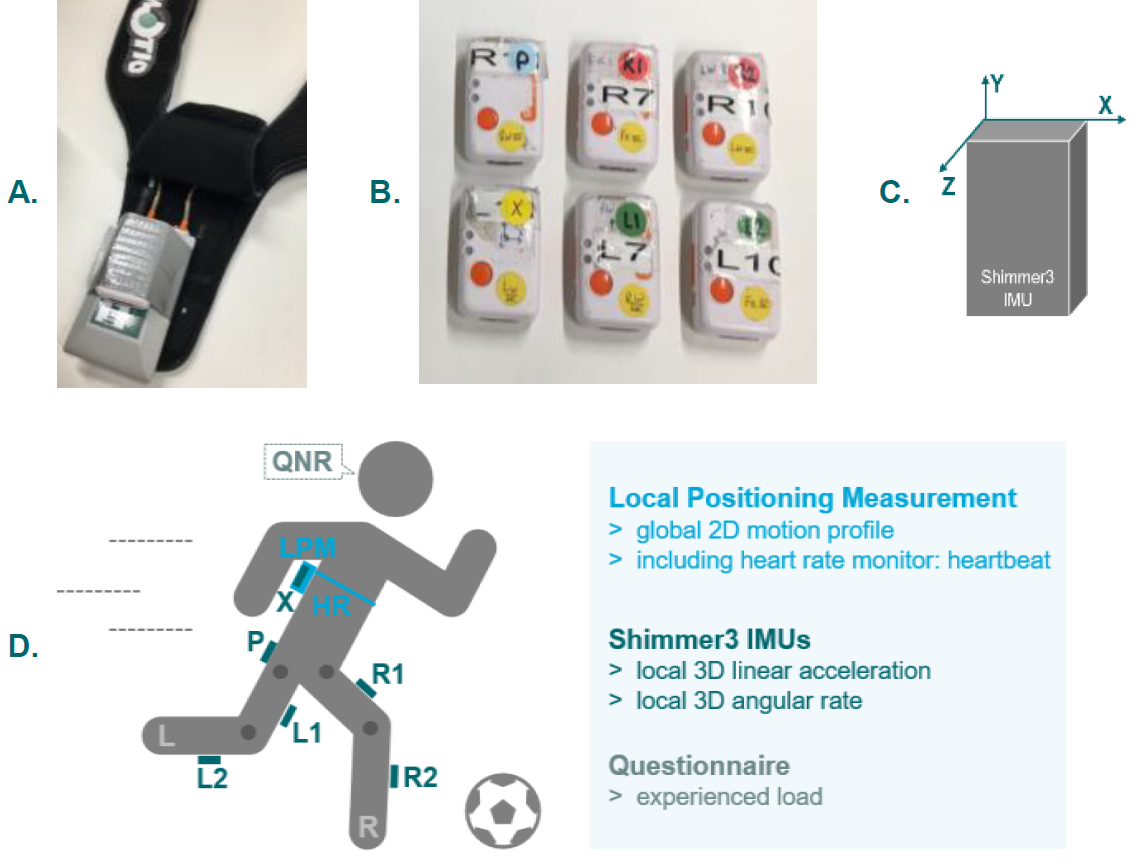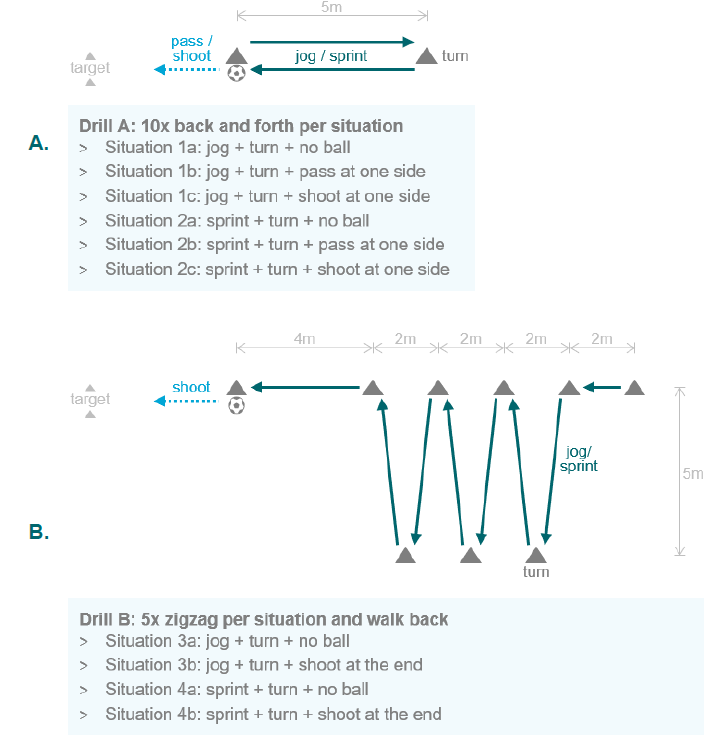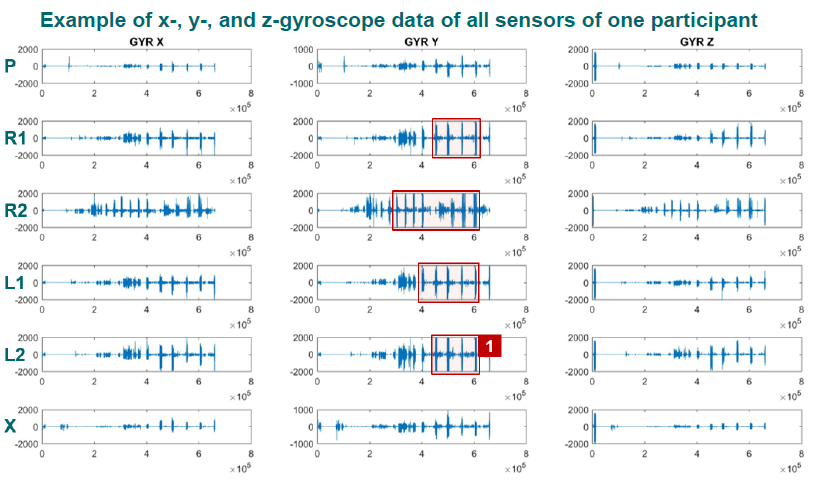Sensor Shorts version 0
Reducing hamstring injuries in football and field hockey
In football, hip and thigh muscle injuries occur as a result of high muscular loads due to accelerative leg movements. To prevent muscle damage and optimise performance, it is essential to being able to identify when and how frequent local hip and thigh muscular loads develop in the explosive and dynamic football environment. With the current LPM system GPS data and cameras near the field can detect only global body movements (the amount of km’s travelled during a match) and cannot detect the local accelerations near the hip which lead to build up of injuries.
In order to gain experience with the monitoring of local movement in the upper leg region a set of six off-the-shelf IMUs (Inertia Movement Units) are attached to a stretchable legging and data is collected from five participants performing a set of football specific drills. The data is then analysed with the focus on intensity levels and the number of peak loads.

Kaspar Jansen
- +31 (0) 152786905
- k.m.b.jansen@tudelft.nl
-
Room B-3-170
Graduate student
- Rozemarijn Schotel (ME)
Supervision
- Prof. F.C.T. van der Helm (ME)
- Dr. F. Bregman (ME)
- Prof. K.M.B. Jansen (IO)
- Ir. Annemarijn Steijlen (IO-EWI)
- Edwin Goedhart (KNVB)
Results and conclusions
An example of the recorded data is shown in Fig.3 below.
The subjective feeling of fatigue during a series of low, medium and high intensity exercises was investigated by asking the participants to give a score on a 10 point scale. Evaluating the data showed that the IMU data was much more capable of distinguishing between the different intensity levels than the standard LPM system, in particular for the high intensity actions of shooting and turning.



